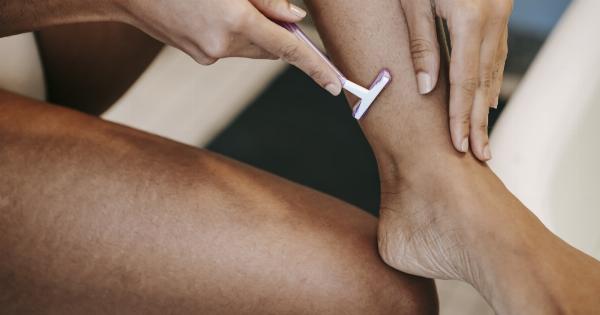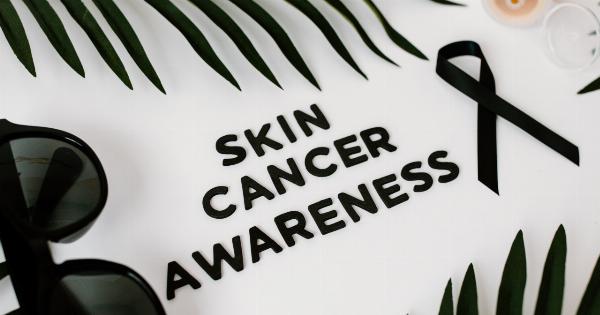Pregnancy is a beautiful journey filled with joy and anticipation. However, it also comes with its fair share of challenges, including changes in your skin.
Hormonal fluctuations throughout pregnancy can cause a range of skin issues, from acne and dryness to stretch marks and melasma. While these can be frustrating, there are ways to manage and alleviate these skin concerns. In this article, we will discuss some common skin issues experienced during pregnancy and provide tips on how to deal with them effectively.
1. Acne
Many pregnant women experience acne breakouts due to increased hormone levels. The sebaceous glands become more active, leading to clogged pores and the formation of pimples. Here are some strategies to combat pregnancy acne:.
- Wash your face twice a day with a gentle cleanser and lukewarm water.
- Avoid using harsh chemical-based skincare products.
- Use oil-free and non-comedogenic moisturizers.
- Avoid squeezing or picking at pimples to prevent scarring.
- Consult with a dermatologist regarding safe topical treatments during pregnancy.
2. Dryness
Pregnancy hormones can also lead to dry and itchy skin. To combat dryness, follow these tips:.
- Drink plenty of water to stay hydrated from within.
- Apply a moisturizer immediately after showering or bathing to lock in moisture.
- Avoid hot showers or baths, as they can further strip your skin of natural oils.
- Use a humidifier to add moisture to the air in your home.
3. Stretch Marks
Stretch marks are a common concern during pregnancy, especially in areas such as the abdomen, breasts, and thighs. While they cannot be completely eliminated, the following tips may help reduce their appearance:.
- Massage a nourishing oil or lotion into your skin regularly.
- Eat a balanced diet rich in vitamins A, C, and E, which promote skin health.
- Avoid excessive weight gain, as rapid stretching of the skin can contribute to the development of stretch marks.
- Stay physically active to improve skin elasticity.
4. Melasma
Melasma, also known as “pregnancy mask,” is characterized by dark patches on the face. Here’s how you can manage melasma:.
- Avoid excessive sun exposure and always wear a broad-spectrum sunscreen with an SPF of 30 or higher.
- Wear a wide-brimmed hat and seek shade whenever possible.
- Use makeup or a concealer to cover the patches if desired.
- Consult with a dermatologist for safe topical treatments to lighten the pigmentation.
5. Varicose Veins
Varicose veins, enlarged and swollen blood vessels, commonly occur during pregnancy due to increased blood volume and pressure. Here are some tips to manage varicose veins:.
- Elevate your legs whenever possible to alleviate pressure on veins.
- Avoid sitting or standing for prolonged periods; take regular breaks to move and stretch.
- Wear compression stockings or supportive tights to improve circulation.
- Exercise regularly, focusing on low-impact activities like swimming or walking.
6. Skin Pigmentation Changes
Pregnancy can cause hyperpigmentation or darkening of certain areas of your skin. Here’s what you can do to manage pigmentation changes:.
- Protect your skin from the sun by wearing protective clothing and using sunscreen.
- Avoid using harsh chemical peels or bleaching agents, as they may be harmful during pregnancy.
- Consult with a dermatologist for safe topical treatments to help lighten the pigmentation.
7. Itchy Skin
Itchy skin, or pruritus, can occur during pregnancy due to stretching and dryness. To find relief:.
- Take lukewarm baths with mild, fragrance-free soaps.
- Apply a moisturizer or soothing oil to alleviate dryness and itchiness.
- Wear loose-fitting clothes made from breathable materials.
- Avoid scratching to prevent skin damage; trim your nails short if needed.
- Consult with your healthcare provider if the itchiness persists or becomes severe.
8. Skin Sensitivity
During pregnancy, your skin may become more sensitive to certain skincare products and ingredients. Here’s what you can do:.
- Avoid using products containing retinoids, salicylic acid, and other potentially harmful chemicals.
- Switch to gentle, fragrance-free, and hypoallergenic skincare products.
- Perform patch tests before using any new products on your face or body.
9. Spider Veins
Similar to varicose veins, spider veins are dilated blood vessels that appear closer to the skin’s surface. To manage spider veins:.
- Stay physically active to improve blood circulation.
- Elevate your legs whenever possible to reduce pressure on veins.
- Wear compression stockings to improve blood flow.
- Consult with a dermatologist or a vein specialist for additional treatments like sclerotherapy.
10. Chloasma
Chloasma, or “the mask of pregnancy,” refers to dark patches that appear on the face. Here are some tips to manage chloasma:.































